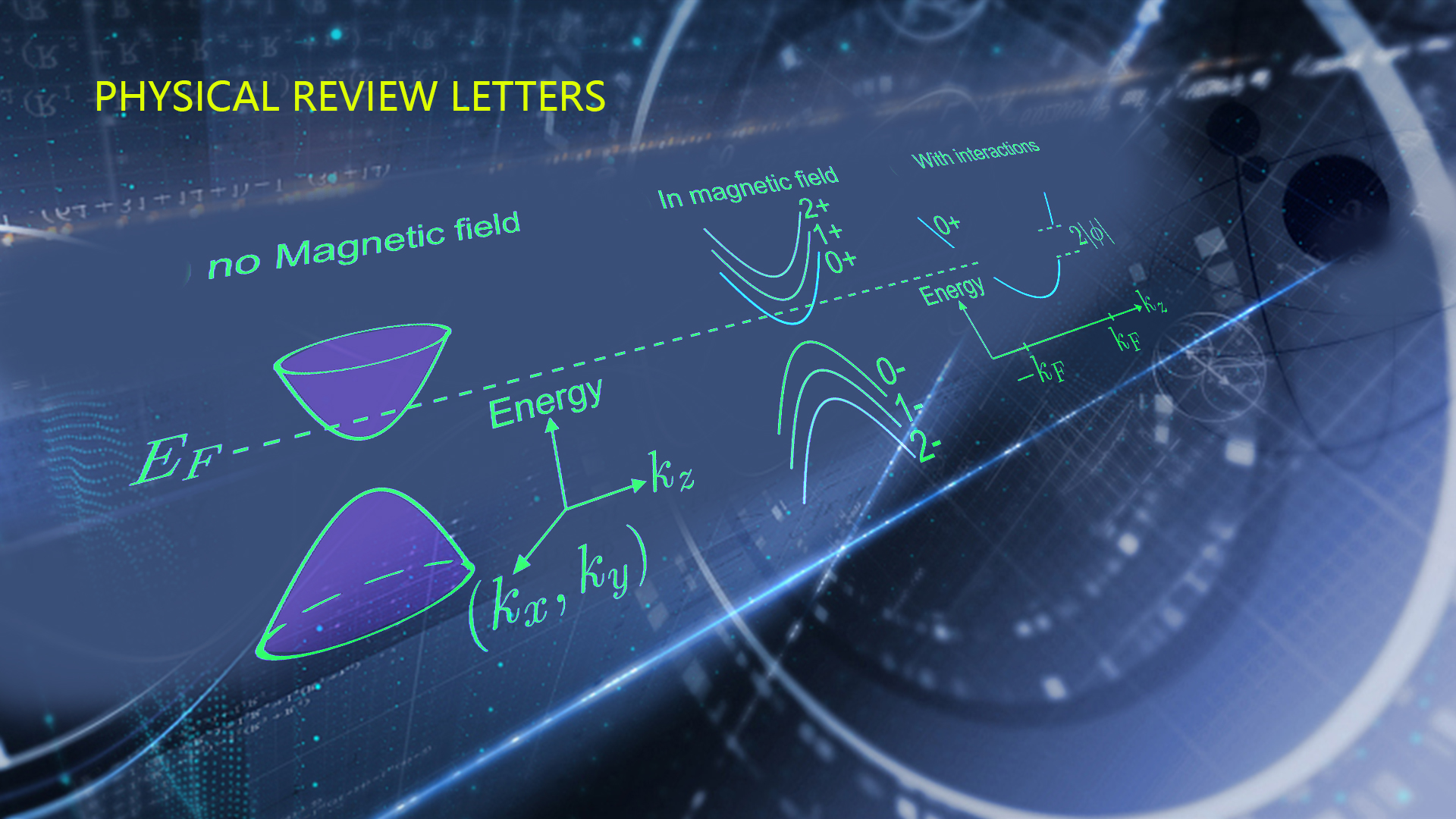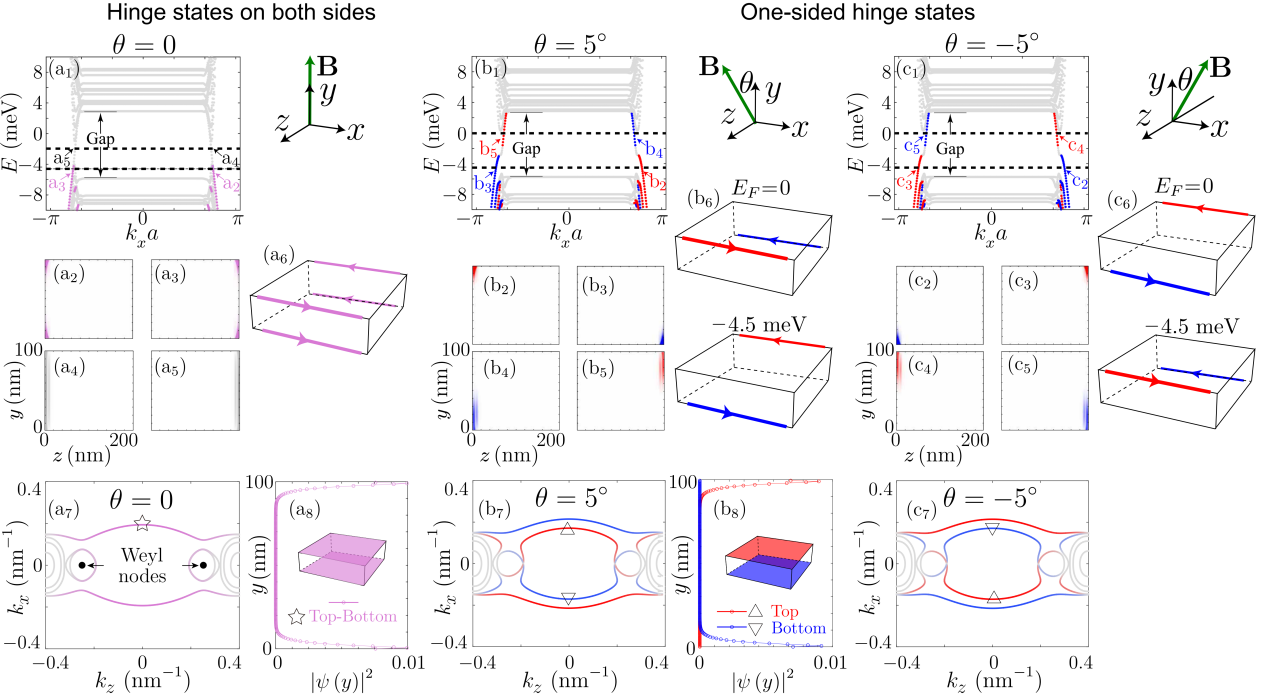Recently, Professor Hai-Zhou Lu’s group from the Department of Physics at the Southern University of Science and Technology (SUSTech) published two works in Physical Review Letters (PRL). Their papers, entitled “Theory for Magnetic-Field-Driven 3D Metal-Insulator Transitions in the Quantum Limit” and “Field-tunable one-sided higher-order topological hinge states in Dirac semimetals,” goes into detail on progress made in magnetic-field-driven 3D metal-insulator transitions and higher-order topological insulators.

In the first article, Professor Hai-Zhou Lu’s group has made progress on the theory of magnetic-field-driven 3D metal-insulator transitions. It is nearly a half-century puzzle for the condensed matter community that a normal metal shows insulating behavior without suffering any thermodynamic effect. One acceptable explanation is that the electron-election interactions open a gap near the Fermi surface and generate the Mott insulator. Another theory is that the strong disorder in systems induces localization of electrons and produces Anderson insulator. Mott and Anderson received the Nobel prize in Physics 1977 for their fundamental theoretical investigations of the electronic structure of magnetic and disordered systems. Nowadays, the community generally believes that the metal-insulator transitions originate from the complicated interplay of electron-electron interaction and disorder.
Interestingly, after discovering the quantum Hall effect in the semiconductor of the two-dimensional electron gases, experiments also found metal-insulator transitions when electrons jump from a quantum Hall plateau to another one. These transitions show universal critical behaviors. These transitions have been well understood with further study: the magnetic-field catalytic Anderson Localization and Delocalization transitions. However, the magnetic-field-driven metal-insulator transitions in non-magnetic 3D systems are very rare.
In 2019, Prof. Liyuan Zhang’s group from SUSTech successfully observed a 3D quantum Hall effect in ZrTe5. At the same time, they also observed magnetic-field-driven 3D metal-insulator transitions that further increased the magnetic field’s strength. These metal-insulator transitions in a 3D system also show robust and universal critical behaviors, which are very similar to the 2D quantum Hall plateau-to-plateau transitions. However, the measured critical exponent for resistivity is much larger than the one for quantum Hall plateau-to-plateau transitions, which makes the nature of the transitions unclear.

Figure 1. A z-direction magnetic field splits the energy spectrum of a 3D insulator or metal (a) into 1D bands of Landau levels dispersing with the wave vector kz (b). (c) Correlations between electrons near -kF and kF open a gap of size 2|ϕ| and induce an insulating phase.
To explore the origin of the magnetic-field-driven 3D metal-insulator transitions and determine the nature of the insulator, the theory proposed by Hai-Zhou Lu’s group solves these two problems. Their model considered all the possible origins of the Fermi surface instabilities (Figure 1), which including electron-phonon interactions, electron-electron interaction, and disorder. They found that the strong magnetic field could enhance the electron-phonon interactions, which induces a phase transition from a metal to an incommensurate charge-density-wave insulator. However, only when the systems coexist with strong electron-electron interactions and backscattering disorder, the electron-phonon-driven phase transitions could produce the experimentally observed critical behaviors.
The critical exponents calculated by their theory agree well with the experimentally measured one. They concluded that the insulator is an incommensurate charge-density-wave. The observed transitions originate from the complicated interplay between magnetic field, electron-phonon interactions, electron-electron interactions, and backscattering disorder. Their theory enriches the understanding of the origin of metal-insulator transitions. With more and more experiments reporting similar magnetic-field-driven 3D metal-insulator transitions, this theory will lead to more exciting researches.
In the other article, Professor Hai-Zhou Lu’s group made progress on the one-sided higher-order topological hinge state. Topological insulators are new states of matter due to the combination of the quantum effect and the nontrivial bulk topology, which have attracted great attention in the past decades. A typical example is the 2D quantum Hall effect that has a bulk band gap as an ordinary insulator but has topologically protected conducting states on its boundaries called edge states. The discovery of the quantum Hall effect is an important advance in physics. The non-dissipative edge states in the quantum Hall effect may provide new routes to designing novel spintronics devices.
Recently, a new kind of topological insulator, a higher-order topological insulator, has been proposed and attracts enormous attention in the condensed matter community. Compared to the topological insulator, the higher-order topological insulator features a distinct bulk-boundary correspondence relationship. For instance, a 3D topological insulator hosts gapless 2D surface states, whereas a second-order 3D topological insulator hosts gapless 1D hinge states. The higher-order topological insulators are challenging to be realized in experiments because of demanding symmetry requirements.

Figure 2. Energy spectrum and wave function distributions for a Dirac semimetal ribbon in (a) a perpendicular magnetic field and (b,c) tilted magnetic fields with opposite tilting angles.
The theory proposed by Hai-Zhou Lu’s group suggests that one-sided hinge states can be realized in Cd3As2-like Dirac semimetals by applying a tilted magnetic field. More importantly, the one-sided hinge states are highly tunable by using electric and magnetic fields. Furthermore, they propose a realistic device to detect the one-sided hinge states. This paper will be insightful for exploring the quantum Hall effects beyond two dimensions and other higher-order topological insulators in the future.
For the first paper, Dr. Peng-Lu Zhao is the first author, and Prof. Hai-Zhou Lu is the corresponding author. The co-authors include Academician X. C. Xie from Peking University. For the second paper, Dr. Rui Chen (the SUSTech Presidential Postdoctoral Fellowship) is the first author, and Prof. Hai-Zhou Lu is the corresponding author. The co-authors include Academician X. C. Xie from Peking University, Dr. Tian-yu Liu from the Max Planck Institute of Germany, and Professor Chun-ming Wang from Shanghai Normal University.
Paper links:
Physical Review Letters (Theory for Magnetic-Field-Driven 3D Metal-Insulator Transitions in the Quantum Limit): https://journals.aps.org/prl/abstract/10.1103/PhysRevLett.127.046602
Physical Review Letters (Field-Tunable One-Sided Higher-Order Topological Hinge States in Dirac Semimetals): https://journals.aps.org/prl/abstract/10.1103/PhysRevLett.127.066801
Proofread ByAdrian Cremin, Yingying XIA
Photo By